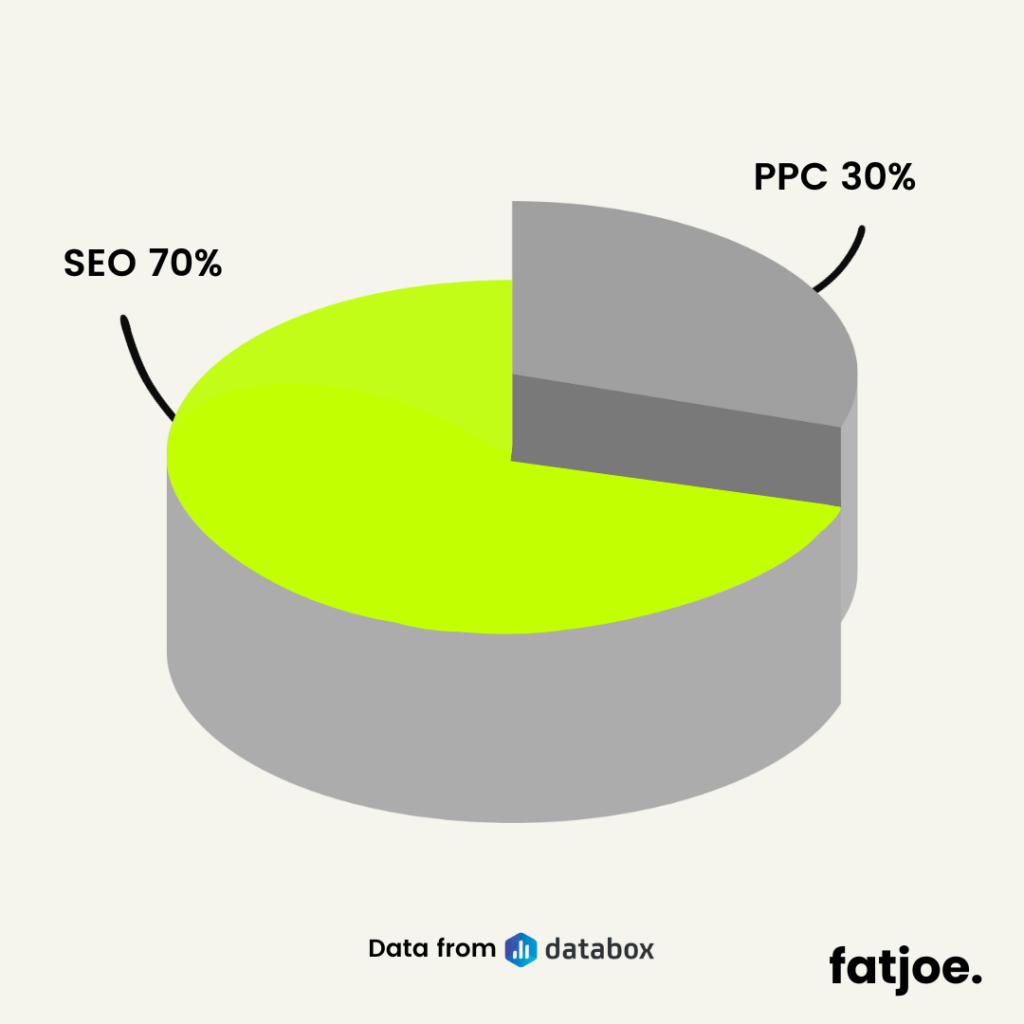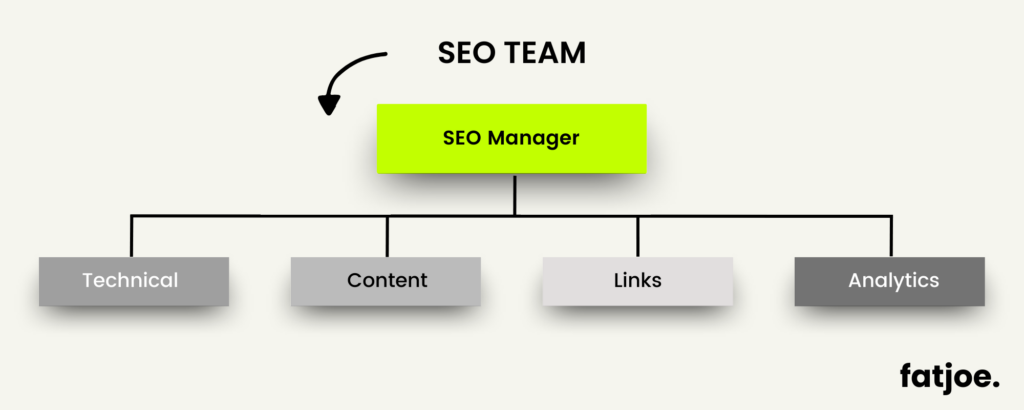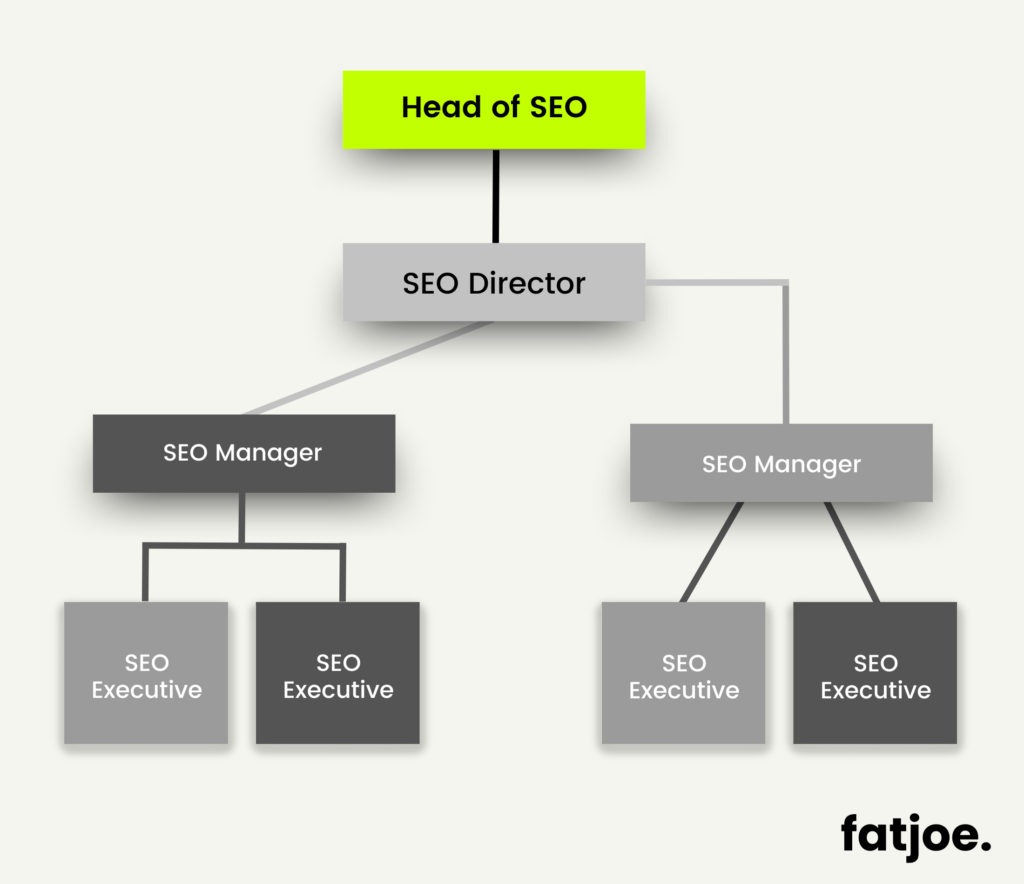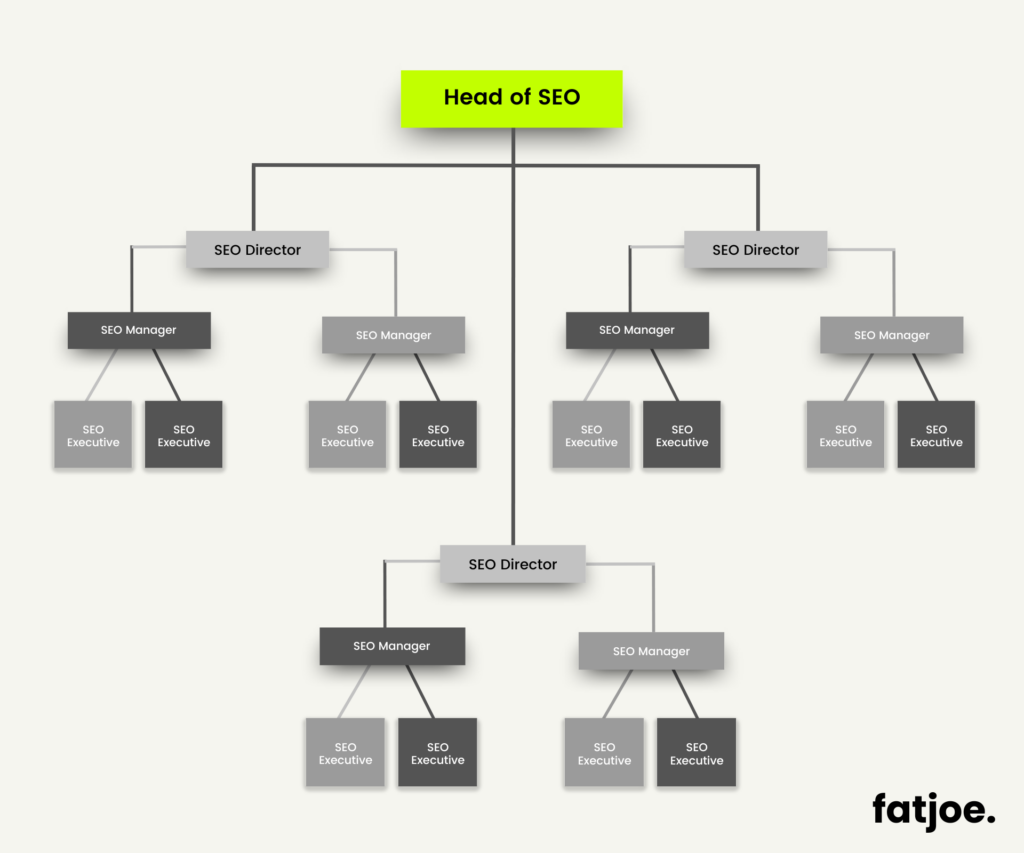There’s a ton of work that goes into a successful SEO campaign.
That’s why you need a team.
But building an SEO team isn’t just about hiring more people.
You need to structure your team to make sure you cover all SEO aspects while avoiding unnecessary costs.
In this guide, we’re going to reveal how to structure your SEO team for maximum effectiveness and efficiency.
We’ll cover:
- What an SEO team is
- The benefits of having a dedicated SEO team
- What to consider when deciding on a team structure
- How to structure your SEO team
What Is An SEO Team?
An SEO team is comprised of several professionals who specialize in improving the visibility of websites in search results. The team is responsible for keyword research, content creation, link building, and other search engine optimization tasks.
SEO teams can vary in size. For example, a small SEO agency might have few in-house strategists supported by outside partners. A large agency might have one Head of SEO supported by several SEO Directors, each with their own team.
Benefits Of Having An SEO Team In Your Marketing Agency
Establishing an SEO team can offer a bunch of benefits for your agency:
Improved Client Results
Clients want to see measurable ROI. And SEO is one of the best ways to achieve that.
In a databox survey, 70% of marketers ranked SEO as more effective than PPC at driving sales for their business:

When you have a team of SEO professionals executing your strategy, achieving outstanding results for your clients is much easier.
Diverse Skill Set
SEO team members can bring a range of skills to your agency. Specialists in content strategy, technical SEO, and analytics can enrich your service offerings and enable you to offer more comprehensive SEO packages to clients.
Consistent Execution
A dedicated team can implement SEO strategies the same way for every client. This can help you achieve consistent results for your clients.
It’s also important to have SOPs for your team to follow. Check out our SOPs guide to learn how to create repeatable processes for your agency.
What To Consider When Deciding On A Team Structure
Before assembling an SEO team, there are a few key considerations you need to take into account.
Establishing your overall goals, target audience, and objectives will help you understand the project’s scope. And it will give you a better understanding of how to structure your SEO team to succeed.
Defining Your Goals
What are your goals?
For example, you might want to increase visits to a local store, drive more traffic to a national website, or increase purchases from an ecommerce store.
This will significantly impact the size and structure of your SEO team.
Identifying Your Target Audience
Understanding who you are trying to reach is essential for your SEO strategy. It guides everything from keyword selection to content creation.
For example, some audiences will prefer certain types of content over others. You might create in multiple formats to scale your strategy and maximize visibility.
A modern SEO strategy is much more than keywords and link building.
Branding, Social Media, Video Content and other factors (depending on the business) play a key role when scaling.
— Chris M. Walker (@cmwalker) May 15, 2022
When you know the types of content you need, you expand your team with professionals who can create the content. That could be infographics, long-form articles, or video content.
Setting Objectives And KPIs
The next step is to set objectives and Key Performance Indicators (KPIs).
Objectives are the specific results you want to achieve, and KPIs are the metrics you use to measure your performance.
Make your objectives specific and time-limited. Then, choose KPIs that reflect the progress towards your objectives.
For example, if your goal is to increase website traffic, keyword rankings and monthly organic traffic are two relevant KPIs you could use.
This will give you insights into your performance and whether you need to expand your team in the future to meet your goals.
How To Structure Your SEO Team
Your SEO team structure will largely depend on the size of your agency.
A smaller agency dealing with more local clients might only need a few people who can handle multiple aspects of SEO. A larger agency working on big SEO projects will require a more extensive team with specialized roles.
For a more detailed breakdown of how to create a team for a specific SEO project, check out our SEO project management guide.
Small Agency SEO Team
For smaller agencies or those just starting to focus on SEO, it’s best to keep your in-house team limited.
A senior SEO manager with a good range of SEO skills and project management experience typically leads this type of team. The rest of the team is made up of specialists in content, technical SEO, analytics, and link building.

Keeping the in-house SEO team light allows for plenty of flexibility. Your team can focus on the core strategy and use outsourcing when needed to meet the demands of a project.
Tasks like content writing and link building are time-consuming and require specific skills. Outsourcing these deliverables to specialists can help you maximize the use of your team’s time and lead to better results.
Check out our guide on outsourcing SEO to discover what you need to know before outsourcing any projects.
Mid-Sized Agency SEO Team
Agencies often need to grow beyond the small team set up to accommodate a broader range of clients and more complex projects.

The Head of SEO is supported by SEO managers who oversee execution and make sure the different aspects of the project are integrated smoothly.
You have more specialized roles like content marketing strategists, link building experts, and user experience (UX) specialists.
Mid-sized agencies also use outsourcing to scale their capabilities based on changing needs. This allows them to offer clients a full-service package without overextending their in-house team.
Larger Agency SEO Team
Larger agencies have more complex client projects and need a more comprehensive SEO team structure. They might be dealing with enterprise and international clients.

The team is usually departmentalized. You’ll have separate departments for technical SEO, on-site optimization, off-site strategies, content creation, and analytics.
It’s common to have highly specialized team members like ecommerce SEO experts, advanced analytics specialists, and international SEO strategists.
Leadership roles like the Head of SEO and SEO Directors guide the internal teams.
Building Crossfunctional SEO Teams
Crossfunctional SEO teams (or CFSEO) are teams that incorporate SEO into the wider marketing structure of a business.
This is important as it stops work from being siloed. Done properly, a crossfunctional SEO approach allows you to integrate your SEO work into on-going marketing work.
This encompasses everything from the content you create to the pages you target for link building or SEO pushes.
Data-sharing across teams also allows for the best possible impact and the most complete decision-making. For example PPC campaign data can give great insight into the terms you should be targeting in your SEO – and then proper SEO work might enable you to rank higher for those terms, lessening the need for PPC.
We’ve got loads more suggestions and examples in our post all about building crossfunctional SEO (CFSEO) teams here.
Creating A Winning SEO Team Structure
Structuring your SEO team is more than just organizing people.
It’s about setting up your team for flexibility and efficiency while maintaining a hierarchy that keeps everyone aligned.
That way, you can achieve great results and easily scale as you grow your agency.
Become a Pro at SEO
Join 65,000 others and learn the secrets to SEO success with our weekly blog posts.
